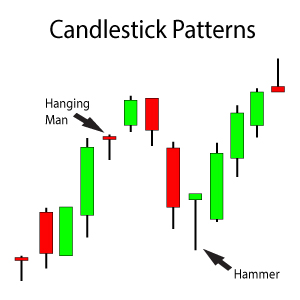Sirius XM Holdings (SIRI) seems to have been grinding above and below the $5.50 pivot area I wrote about previously in this article.
“9/25/2017 – SIRI & Its $5.50 Pivot Area”
In that update, my summary for the stock was as follows:
Use this possible consolidation period to reload on lots of shares that were sold from your core position. If you are trading SIRI, buy below $5.50 and sell above it as a general rule.
While the selling of shares by Berkshire seems to have started a consolidation for SIRI’s share price, the trend remains up. But in order for the next significant move to take place, a continued consolidation may occur to try and remove any sellers. If you can’t stand sitting through a possible continued consolidation, then consider selling some shares above the $5.50 pivot area until SIRI confirms that its uptrend has resumed.
The continued consolidation mentioned in my previous summary is still taking place for SIRI’s share price. With some continued time below the $5.50 pivot area, it is looking more probable of a continued consolidation. Since some additional time has passed since the September update, more specific downside risk areas for a continued consolidation can be calculated and identified. Let’s start calculating….
Sirius XM Holdings (SIRI)
This first chart for Sirius XM Holdings is a 10 year monthly candlestick chart. There are 3 Fibonacci Extension Tools placed on the chart to help with upside price calculations and then 2 trendlines.
- The upper trendline is the main supporting trendline since Sirius XM Holdings (SIRI) began its uptrend at the $.05 price level
- The lower trendline is the probable support area for a break below the main supporting trendline
Currently, SIRI’s share price sits right on the main supporting trendline, typically a good time to buy shares for an upwards trending stock. However after months and months of continuous positive buying momentum, the MACD Histogram is just starting to shows its first bit of longer-term selling momentum. This is a bearish sign, not a bullish one.
Any breaks below the main supporting trendline have been relatively quick, except for the extended break below that occurred in 2016. SIRI’s share price recaptured control of the trendline in February 2017 and now looks to re-test the trendline support[s2If !current_user_can(access_s2member_level1)]……
If you want to continue reading this article for Sirius XM Holdings (SIRI), you must first login.
I calculate downside price objectives for Sirius XM Holdings (SIRI) in event of a continued consolidation, which is very likely based on the chart indicators.
If you are not a Trendy Stock Charts member, consider joining today! There are several different subscription plans available.[/s2If][s2If current_user_can(access_s2member_level1)].
The lower trendline, the probable support area on a break below the main supporting trendline, sits around the $4.75 price level.
SIRI – Downside Risk Areas Calculated
This next chart is a 3 year weekly candlestick chart for SIRI. The MACD Histogram on this 3 weekly chart shows selling momentum that has been increasing over the last several weeks. When compared to the monthly chart, the selling momentum on the weekly chart has finally reached a point where the shorter-term momentum has gained enough momentum to show the first signs of selling momentum longer-term on the monthly chart.
But the MACD Histogram is showing signs where the MACD Histogram is rounding off and could be ready to start decreasing back towards a zero reading. Typically the best time to make a scale-in purchase is near a support area and when the MACD Histogram shows at least 2 consecutive decreases in selling momentum. SIRI has not shown any decreases on the weekly chart yet but does have an upcoming earnings report in early February. Things could change between now and then.

Analyzing a Confluence of Bearish Candlestick Patterns Developing Around the $5.50 Pivot Area for Sirius XM Holdings (SIRI)
Downside Risk Area #1
A break below the main supporting trendline should find support at the lower trendline. This lower trendline has supported the main supporting trendline breaks in the past. Finding support at the lower trendline should be around the $4.75 price level. That also falls in between the 38.2 and 50% Retracement Lines, though the 50% Retracement Line sits a little lower than $4.75.
Downside Risk Area #1, which should be a very strong support area, calculates to $4.59 – $4.75.
Let’s place a Fibonacci Extension Tool on the downtrend that has developed so far and see what it calculates to for the downside risk areas during this consolidation.
Downside Risk Area #2
I was able to place 3 different Fibonacci Extension Tools on SIRI’s downtrend activity to calculate some additional downside risk areas. Usually I look at the 61.8%, 100% and 161.8% Target Lines. But since SIRI’s consolidation has already lasted for months, I want to focus only on the 100% and 161.8% Target Lines from each of the tools. The 61.8% Target Lines measure more of the shorter-term moves in my opinion and we are past the shorter-term part of the consolidation.

Using Fibonacci Extension Tools to Calculate Downside Risk Areas (Price Objectives) for Sirius XM Holdings (SIRI) Share Price
The first downside price target lower than each of the 100% Target Lines is the $4.97 price level. This represents the 100% Target Line from the blue Fibonacci Extension Tool and the 161.8% Target Lines from the black and red tools. The next downside price target is the $4.64 price level represented by the 161.8% Target Line from the blue Fibonacci Extension Tool. That sits just below the previous pullback area of $4.75 in early 2017.
The Fibonacci Extension Tool target prices are looking like a $4.64 – $5 price range.
SIRI – Moving Averages
This last chart is a 1 year daily candlestick chart to see what the moving averages hint towards. In the September update for SIRI I noted that its share price had broken below its 50 Day moving average and stated the following:
A break below the 50 Day could be indicating a longer consolidation period for SIRI as well as a possible trip to the 200 Day moving average.
Let’s see what took place since the September article.
SIRI did indeed find its way towards the 200 Day moving average as was anticipated. It made a nice rebound on its first trip there but now finds itself sitting on the underside of the 200 Day moving average line.
If SIRI does not retake control of the 200 Day moving average line in the upcoming week, I would think that the continued break below it is then confirming the lower risk areas and price objectives that were calculated above.
SIRI – Point & Figure Charts
What do the Point & Figure Charts say about price projections for SIRI? Let’s find out.
In the September article for SIRI linked above, the Point & Figure charts also listed a bullish price objective of $8.25. The price objective remains the same.
And that goes to show one of the inherent weaknesses with Point & Figure Charts – they do not provide time frames for when their price objectives will be met. We have seen the same price objective now for the stock since September even during a consolidation period that I identified back in the September article.
While Point & Figure Charts can help to provide price targets when other methods fail, they should be just one part of the investor’s toolbox.
Sirius XM Holdings (SIRI) Summary
Putting all the charts together, the consolidation period for Sirius XM Holdings (SIRI) continues.
Purchasing shares on a pullback to a main supporting trendline is always a good idea unless the overall uptrend looks like it has completed. That does not appear to be the case for SIRI. So if you are a longer-term investor, you could use the main supporting trendline as a place to make a scale-in purchase of shares.
As with any consolidation period, be careful not to scale-in too fast as the consolidation period may still have lots of time to complete. The consolidation does not yet look complete for Sirius XM Holdings (SIRI).
If there is a break of the main supporting trendline, the downside risk areas calculated point towards the $4.64 – $4.75 price level. That is where another scale-in purchase of shares could be made. You could possibly even try to wait until this price level to make your initial scale-in repurchase. Monitor the MACD Histogram on a weekly chart to help with the decision. As noted above, when there are 2 consecutive decreases in selling momentum it could be pointing towards the end of the pullback.
As always, you can just stop back here and ask for another update as well.
But until Sirius XM Holdings (SIRI) confirms that it has resumed back into an uptrend, use caution and patience when repurchasing shares. If SIRI retakes control of the 200 Day moving average this upcoming week, then that may be the early confirmation. But if it doesn’t, use the above calculated price levels to make small scale-in repurchases of shares that were sold above the $5.50 price level.
While SIRI still has potential for higher price targets, that potential is put on hold until the consolidation period is over. As with any consolidation period, use cation when scaling into positions. Sometimes the consolidation periods last longer than anticipated.
[/s2If]

















Ask a Question. Make a Comment. Leave a Reply.